How to successfully cater to older players
Mobile veteran Wilhelm Taht looks at lessons from Bingo Bash's success on successfully appealing to players aged 55+
2020 marks my 16th year in mobile gaming. Over these years I have been fortunate to have been involved in the production of a number of chart-topping titles, including many of the Angry Birds games, Doodle Jump, Tiki Towers, and South Park mobile games -- just to name a few.
I've played a variety of roles while helping to deliver gameplay that was suited to many different types of users -- but one area I had yet to really focus on was building games for players outside of the traditional age range.
Having a tenured playerbase will also influence what you can and can't do
In November 2019, however, I found myself in the most interesting challenge of my career to date: I was given charge of a massively successful bingo game that was approaching its tenth anniversary, and played predominantly by women aged 55+. Collectively, those players have spent over 50,000 years in the game, and I was now working alongside Bingo Bash's team based across India, Israel, Ukraine and the US.
There are numerous reasons why this role at GSN Games appealed to me; not the least of which was the challenge of understanding how to succeed when building a game for an older audience.
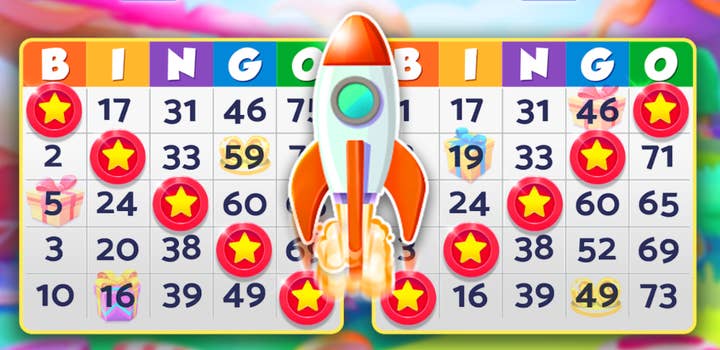
Gamers aren't getting any younger
In 2018, people aged 65+ outnumbered children under five years old globally for the first time in history (Deutsche Welle). By 2050, over 16% of the world's population will be 65 years or older (United Nations). And even as far back as 2012, reports showed us that over 70% of US disposable income is controlled by individuals aged 65 and above (Nielsen).
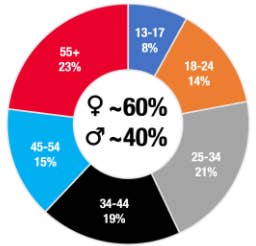
This consumer age-group is not a stranger to games. "Peak NES sales" happened when they were in their 30s and 40s, with many of their children engrossed in the first generation of Mario and Zelda games. Furthermore, this age group is currently one of the most engaged mobile game player segments in the world (see chart, right)
From this simple illustration, we can deduct two things:
- Mobile gamers are predominantly women.
- The largest group of mobile gamers is 55+ (albeit, this is also the largest age bracket within the data).
As such, taking any learnings to heart on how to serve this growing group of diehard mobile gamers -- with a high income -- should hopefully interest some of you.
Seeing and thinking differently
Let's face it: the older we get, the worse our eyesight becomes. Glaucoma, presbyopia, dryness, age-related macular degeneration, temporal arteritis, cataracts; these are all there waiting for us as potential challenges as we age.
As game developers, we have to keep in mind the physical limitations that players of an older age can and do face. But we also need to distinguish between something that is clear, readable, clearly colored and with sufficiently large buttons, with something that may come across as too accommodating, to the point of being condescending. Remember: we are designing games for smartphones, not for users of the Jitterbug. Context matters.
As we age, our brains physically shrink. We're luckily past the stage of medical quackery that correlated the size of the brain with our level of intelligence, but there are a myriad of other things that also happen inside our heads as we age. It results in general preference for entertainment that isn't as demanding for processing as the "Twitch generation" might crave. As such, we must ensure that in-game objectives and mechanics are easy to understand.
We have to keep in mind the physical limitations that players of an older age can and do face
As we grow older, our love for challenges does not disappear. It's the context that changes. At 55+, the cognitive load from playing League of Legends will, on average, be a lot to handle. As such, completion or "luck-based" challenges will often be preferred for the majority of this age group than skill-based challenges that demand changes in processing from moment-to-moment.
It is imperative that you communicate with older players to gain a firm understanding of how they view and ultimately understand your content. Don't settle for doing superficial high-level online or in-game surveys, or polls on social media. Communicate with the players in depth, and really get to know them.
There are tons of tools and service providers for this available online; explore them, and read up on case studies on how to better get to know your players. And if your game is new, ensure you have a firm grasp on who you think your players are, and start that dialogue early.
As a result of our research into player understanding, we have been able to provide a suitable challenge to our key demographics by introducing a large number of variations to the traditional seven bingo patterns. This has given players both a variety in challenges and fresh surprises during their time with Bingo Bash. We've been able to introduce this variety by keeping the rules for calling a bingo as clear as possible, communicated in a way that players can easily understand.
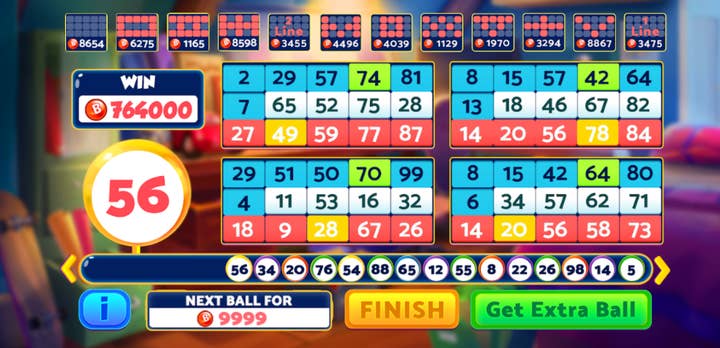
Readability
The points raised in the section about differences in sight and cognition will ultimately dictate a great deal about how you communicate with older players. You must ensure color contrasts of objects/characters, as well as font sizes and colors, are suitable to ensure the in-game narrative can come to life. Equally important, though, is focusing on keeping your communication clear and simple so that nothing is lost on your players.
It can be a challenge to minimize the amount of things we want to say and make sure the interesting parts get all the attention. Readability thus becomes something you end up iterating on a lot until the shipping of a game.
Focus on keeping your communication clear and simple so that nothing is lost on your players
At GSN Games, we've now also started to ensure our content is readable and clear also for players with color blindness, which is something we will keep doing moving forward. Color blindness correlates with age; 45% of people in their mid-70s, and up to 50% of those aged 85 or older, are reportedly color blind. Red-green color blindness is the most common version, and we've made sure to take this into account when designing Bingo Bash's color palette.
The job of a mobile game developer has changed over the last decade to involve a lot of "non-core" game development angles. CRM, social media, and player services are all new pieces of the puzzle, just to name a few. When developing communications for older players across all of these roles, there's a simple list of rules that we have found incredibly useful:
- Don't use modern slang (bingo dabbing and Fortnite dabbing are not the same thing)
- Don't make content too easy (simple, not simplistic)
- Don't make anything too complicated (yes, that's #2 again)
- Don't push the players to the newest social media platform (it's unlikely that we'll start up a TikTok fan-page for the existing Bingo Bash audience)
- Do use emotive and even patriotic content (but avoid politics!)
We rarely find negative feedback when it comes to readability and understandable communication, but when it is raised, we sometimes realise that the narrative in the player's mind was received differently from what we had intended.
Keeping an "as objective as possible" point-of-view, and always trying to place ourselves in the player's position, is thus an exercise we constantly find ourselves in. As such, the stories and narrative that do end up in the game are never too outside-of-the-box and are deliberately kept simple (but not simplistic).
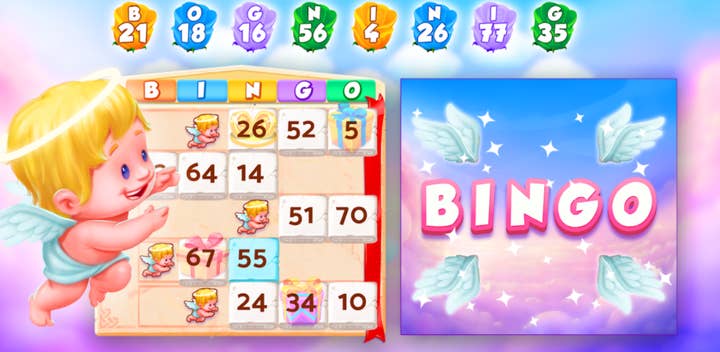
Know the difference between "old" and "tenured"
To nurture a playerbase that sticks with you for a very long time, you need to really get to know the players (see above) and provide content that resonates with them on an emotional level. Given the cadence of new game releases on the market (at its peak, one new mobile game in every two minutes) and the relative competitiveness in the more popular categories, the role of data-informed innovation when bringing new content to the market has never been more important.
Bingo Bash has one of the most loyal playerbases that I've ever witnessed in a mobile game. There are a multitude of reasons why that is, but I can confidently say that Bingo Bash has evolved into a true digital hobby for many of its players.
The word "tenured" is often thrown around with a specific meaning; players who have played the game for a long time. Our players are following us closely across social media, they are eager to help us with art and design questions, and are always eagerly awaiting what new features we bring out. But having a tenured playerbase will also influence what you can and can't do. Personally, I've had to recalibrate several things I thought of as "truths" in mobile free-to-play games after joining the Bingo Bash team.
Having a tenured playerbase will also influence what you can and can't do
For example, let's look at the simple act of changing a mobile game's icon. Based on my experience in mobile game design, I've come to know this as a fairly trivial task. It's an old trick for mobile publishers who are driven by the hunt for the best app store page views and download conversion rates (while keeping the game's creative blueprint in check). Run a few tests on the stores, find a better performing version, integrate in the game -- rinse and repeat.
But with tenured players aged 55+, we're faced with a different situation. The audience of Bingo Bash is used to the game's icon. They have played the game for a long time, over many gameplay sessions per day. This icon is an integral part of the game. To them, it is Bingo Bash. And to top it off, the icon has not been changed for a long time.
To prevent confusion among our playerbase, the process for changing our icon has started to resemble more of a brand/logo evolution process. We've meticulously tested many versions of the icon, and created a system in which we integrate the best performing one on the mobile platform with the lowest Daily Active User base. And therein, carefully monitor any positive or negative impact on DAU.
Are we overcomplicating the matter, or simply catering to the tenured audience base in the absolute best way? I dare say the latter. I'm quite sure that there are "older" mobile game players who are underserved at the moment, and looking for content where also they can become tenured.
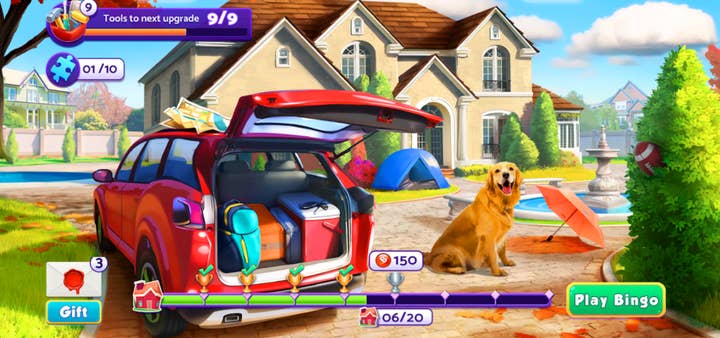
Not all players are created equal
What's in the age of a player? A lot. And at the same time, very little.
This short article initially pointed out that the audience is predominantly women aged 55+, but I think we can all agree that user demographics aren't the best way to summarize a person. In modern game design, we're now much more interested in psychology, in player needs, socio-economic factors, and so on. There's an exciting mix of data and theory out there, and some days it feels like we're only just getting started.
So while we can take certain age-related matters as input for our game design choices, we also have to tread lightly with using age as a deciding factor for how to approach game design. Mobile bingo players probably have less in common with Fortnite players than they do with, let's say, bridge players. But while age might be a common denominator between bridge and bingo players, there's a lot more that sets them apart.
We have to tread lightly with using age as a deciding factor for how to approach game design
When you decide who you are building your mobile game for, it's true that taking the main filters that Facebook provides for UA targeting will provide huge value for the eventual scaling of your game. But those filters do not go deep into understanding true player motivations.
The further refined your approach to catering to specific needs and psychological traits of your target audience, the better chances you have for ensuring you succeed in delivering towards them. Additionally, your target players will not be able to tell directly what they want. You will have to go deeper using profiling and deep understanding of the target playerbase.
We took the time during the first months of 2020 to dive deep into really understanding who the Bingo Bash players are, why they play, what kind of emotions they experience while playing. We wanted to better understand what excites them, what doesn't, and many other aspects of how they personalize their experience.
From this research we deduced that there were certain player types who we wanted to more clearly steer our game design and development efforts towards. But we'll be making those changes in a way that takes all of the above considerations into effect.
The lesson? When you read clever-sounding articles online that try to convey a message about a topic that is relevant to you, please keep in mind the backdrop of the article. We should strive to learn from everyone, but also tread carefully when copying from them if we don't understand the "why?" and the context. As they say, age is just a number. And definitely not all 55+ players are created equal.
We can never forget that having a loyal, tenured playerbase today, does not mean they will be there playing the game tomorrow.
Wilhelm Taht is a mobile games business executive who has worked in the industry since 2004. From 2016 to 2018, he was Rovio's executive VP of games and he is currently GSN Games' senior VP and general manager for Bingo Bash.